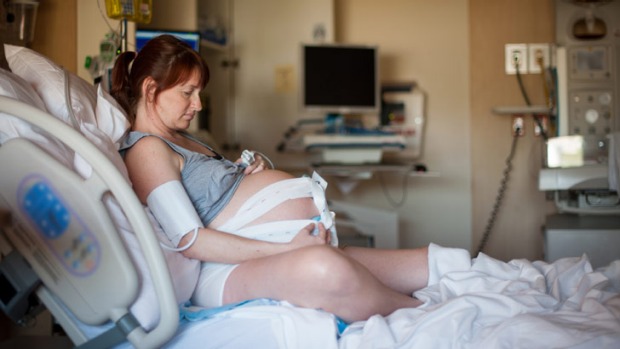
Estimates of illicit drug use in pregnancy vary widely. Approximately 5–10% of women self-report the use of illicit drugs in pregnancy, while universal testing for illicit drugs in high-risk populations results in a significantly higher prevalence (10–40%) of usage than through self-reporting. More than 50% of pregnant women take prescription or nonprescription (over-the-counter) drugs or use social drugs (such as tobacco and alcohol) or illicit drugs at some time during pregnancy, and the use of drugs during pregnancy is increasing.
In general, drugs should not be used during pregnancy unless necessary because many can harm the fetus. Less than 2 to 3% of all birth defects result from drugs that are taken to treat a disorder or symptom.
Why are pregnant women warned not to use drugs?
It’s possible that you may not have a serious or long-lasting problem after using drugs. But the same is not always true for a fetus. Drug-using mothers often give birth to “drug babies.” These children have a host of developmental problems. Studies show that using drugs — legal or illegal — during pregnancy has a direct impact on the fetus. If you smoke, drink alcohol, or ingest caffeine, so does the fetus. If you use marijuana or crystal meth, your fetus also feels the impact of these dangerous drugs. And if you are addicted to cocaine — also called coke, snow, or blow — you’re not only putting your own life on the line, but you are risking the health of your unborn baby. The consequences of using cocaine include heart attacks, respiratory failure, strokes, and seizures. And these life-threatening health problems can also be passed to an unborn baby.
Taking drugs during pregnancy also increases the chance of birth defects, premature babies, underweight babies, and stillborn births. Exposure to drugs such as marijuana — also called weed, ganja, dope, or pot — and alcohol before birth has been proven to cause behavior problems in early childhood. These drugs can also affect the child’s memory and attentiveness. In addition, some findings show that babies born to women who use cocaine, alcohol, or tobacco when they are pregnant may have brain structure changes that persist into early adolescence.
Umbilical Cord Testing
The placenta is a temporary organ that connects a growing baby to your uterus during pregnancy. It attaches to the wall of your uterus, usually on the top or side, and acts as a lifeline that gives nutrients and oxygen to your baby through the umbilical cord.
Umbilical cord testing is thought to reflect maternal drug use during approximately the last trimester of a full-term birth. Routine analysis by the drug detection panel includes qualitative detection by mass spectrometric methods for all compounds (eg, opioids, stimulants, sedative-hypnotics). The presence of metabolites improves confidence in results and lengthens the detection window. Tests to detect marijuana metabolite and ethyl glucuronide (alcohol metabolite) can also be conducted.
Primary drugs detected include:
- Opioids: heroin metabolite (6-acetylmorphine), morphine, codeine, oxycodone, oxymorphone, hydrocodone, fentanyl, tramadol, tapentadol, propoxyphene, meperidine, buprenorphine, methadone
- Stimulants: cocaine, methamphetamine/amphetamine, methylenedioxymethamphetamine (MDMA-Ecstasy), Phentermine
- Sedative-hypnotics: benzodiazepines, barbiturates
- Other drugs: gabapentin, zolpidem, phencyclidine (PCP)
Do doctors test the placenta for drugs in every pregnancy?
Newborn drug testing is recommended in infants born to mothers with high-risk behaviors (eg, history of drug use/abuse, prostitution, nicotine use), minimal or no prenatal care, or unexplained obstetric events (eg, placental abruption, premature labor). Additionally, infants with unexplained neurologic complications, unexpected intrauterine growth retardation, or drug withdrawal symptoms (eg, NAS) would be tested for drug exposure.
What happens during my postnatal (after birth) care?
After your baby is born, you will be asked to stay in the hospital for at least three to five days (72-120 hours) so that your baby can be checked for withdrawal symptoms. During your stay, you will be supported to care for your baby regarding feeding, settling, bathing, and nappy changing as needed. This support is offered to all mothers. After you leave the hospital with your baby, the midwife will visit you at home. When your baby is 10-14 days old, your Health Visitor will visit and will be a good source of information and support on motherhood and all aspects of health for you and your baby.
There will be baby clinics at local doctor’s surgery or health clinic where the development of your child will be assessed. Some areas also have local parent and child groups and breastfeeding support groups to go to as well. All these things are there for the benefit of you and your baby.
Should I change my drug and alcohol use in pregnancy?
The simple answer is yes. You should reduce or stop the use of all drugs and stop alcohol if you can. If you have a drugs worker, tell them you are pregnant so that they can help you with aspects of your drug use during pregnancy. If you haven’t, the midwife will be able to refer you to a specialist agency for help. You will be seen quickly. Your partner can also be referred, if necessary. It is advisable to keep your drug use as stable as possible throughout your pregnancy. This means taking the same amount of drugs every day and avoiding taking extra.
If you are on a methadone programme and experience morning sickness, your doctor may recommend splitting your daily dose into two lots; one dose in the morning and one at night. Splitting your dose will keep you and your baby more stable late in pregnancy too.
Reducing your drug dose
If you think you could manage to reduce your drug use then you would be supported to do so. Talk to your specialist drug worker first, so you can do this sensibly. It is important to avoid relapsing when you are reducing, so slow reductions are usually better.
Stopping your drug dose.
It is generally safe to stop using most drugs including:
- Tobacco
- Cannabis (hash)
- Amphetamines (speed)
- Ecstasy
- Cocaine and or crack cocaine
- Solvents (gas or glue)
- LSD (acid)
- New Psychoactive Substances (Legal Highs).
Why it is done?
Identification of newborns exposed to illicit drugs in pregnancy cannot only alert the practitioner to problems one might encounter in the delivery room and nursery but can also serve as an opportunity to recognize and assess families with substance abuse disorders which can pose risks to the newborn after hospital discharge.




